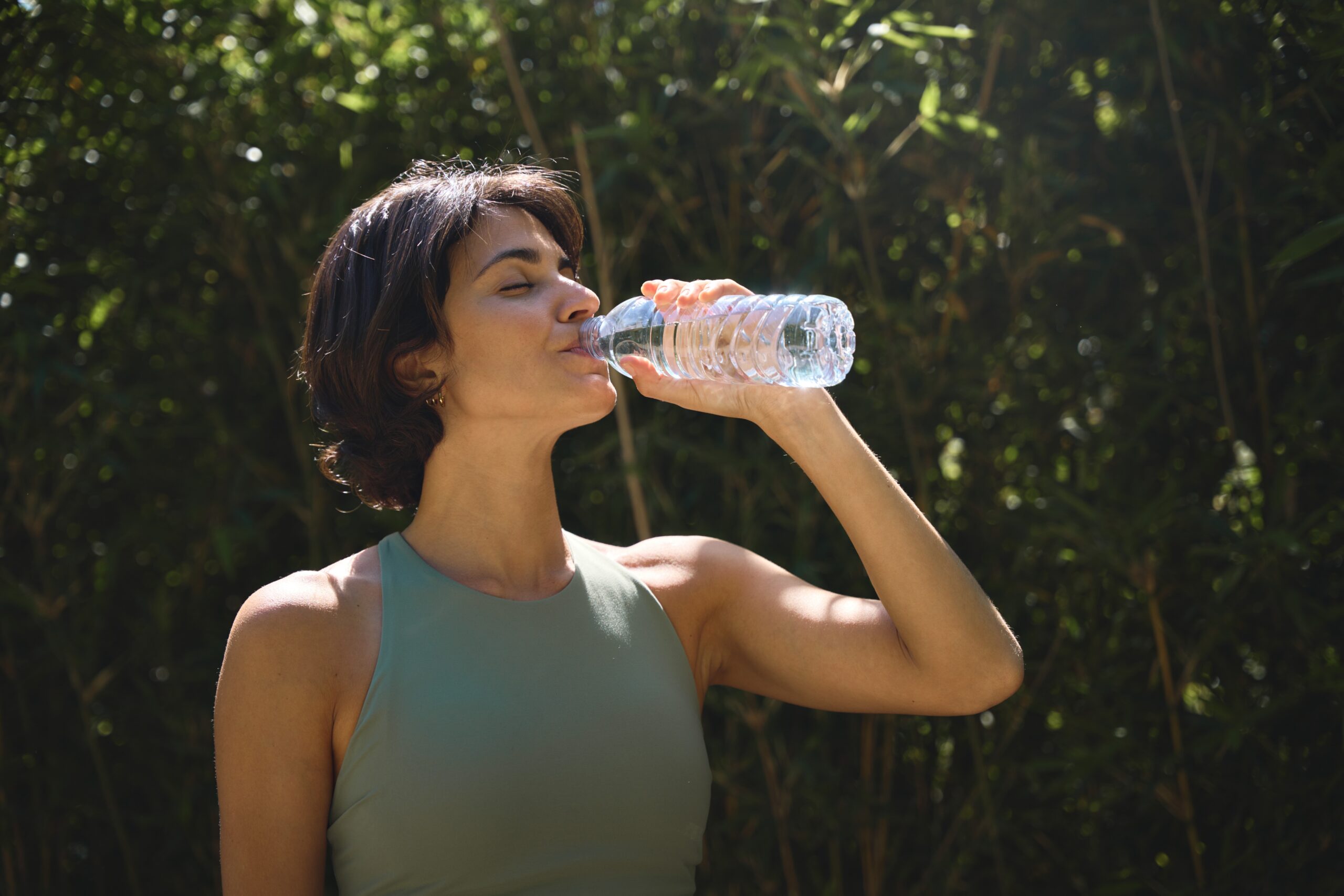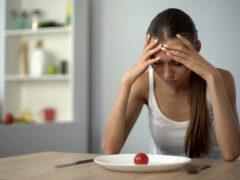Your body depends on water to survive. Every cell, tissue, and organ in your body needs water to work properly. For example, your body uses water to maintain its temperature, remove waste, and lubricate your joints. Good hydration is important for overall good health.
Making sure you get enough water every day is an important step in maintaining your health.
Path to improved health
Most people have been told they should drink 6 to 8, 8-ounce glasses of water each day. That's a reasonable goal. However, different people need different amounts of water to stay hydrated. Most healthy people can stay well hydrated by drinking water and other fluids whenever they feel thirsty. For some people, fewer than 8 glasses may be enough. Other people may need more.
While plain water is best for staying hydrated, other drinks and foods can help, too. Water can be found in fruits and vegetables (for example, watermelon, tomatoes, and lettuce), and in soup broths. Fruit and vegetable juices, milk, and herbal teas add to the amount of water you get each day. Just make sure to limit sugary drinks that are high in calories.
Hydration and caffeine
Even some caffeinated drinks (for example, coffee, tea, and soda) can contribute a little to your daily water intake. A moderate amount of caffeine (400 milligrams) isn't harmful for most people. Here are the caffeine amounts found in popular drinks:
- 12 ounces of soda: 30 to 50 milligrams
- 8 ounces of green or black tea: 30 to 50 milligrams
- 8 ounces black coffee: 80 to 100 milligrams
- 8-ounce energy drink: 45 to 80 milligrams
However, it's best to limit caffeinated drinks. Caffeine will cause you to urinate more frequently. This can make it difficult to stay hydrated. It can also make you feel anxious or jittery.
Sports drinks can be helpful if you're planning on exercising at higher-than-normal levels for more than an hour. They contain carbohydrates and electrolytes that can increase your energy. They help your body absorb water. However, some sports drinks are high in calories from added sugar. They also may contain high levels of sodium (salt). Check the serving size on the label. One bottle usually contains more than one serving. Some sports drinks contain caffeine, too. Remember that a safe amount of caffeine to consume each day is no more than 400 milligrams.
Energy drinks are not the same as sports drinks. Energy drinks usually contain large amounts of caffeine. Also, they contain ingredients that overstimulate you (guarana, ginseng, or taurine). These are things your body doesn't need. Most of these drinks are also high in added sugar. According to doctors, children and teens should not have energy drinks. Because these drinks have high amounts of caffeine, they do not offer good hydration.
If staying hydrated is difficult for you, here are some tips that can help:
- Keep a bottle of water with you during the day. To reduce your costs, carry a reusable water bottle and fill it with tap water.
- If you don't like the taste of plain water, try adding a slice of lemon or lime to your drink.
- Drink water before, during, and after a workout.
- When you're feeling hungry, drink water. Thirst is often confused with hunger. True hunger will not be satisfied by drinking water. Drinking water may also contribute to a healthy weight-loss plan. Some research suggests that drinking water can help you feel full.
- If you have trouble remembering to drink water, drink on a schedule. For example, drink water when you wake up, at breakfast, lunch, and dinner, and when you go to bed. Or drink a small glass of water at the beginning of each hour.
- Drink water when you go to a restaurant. It will keep you hydrated, and it's free.
Things to consider
If you don't drink enough water, you may become dehydrated. This means your body doesn't have enough fluid to operate properly.
Your urine can be an indicator if you're dehydrated. If it's colorless or light yellow, you're well hydrated. If your urine is a dark yellow or amber color, you may be dehydrated.
There are other signs that can signal you may be dehydrated. They include:
- Little or no urine
- Urine that is darker than usual
- Dry mouth
- Sleepiness or fatigue
- Extreme thirst
- Headache
- Confusion
- Dizziness or lightheadedness
- No tears when crying
Some people are at higher risk of dehydration. They include people who:
Exercise at a high intensity (or in hot weather) for too long
Have certain medical conditions (kidney stones, bladder infection)
Are sick (fever, vomiting, diarrhea)
Are pregnant or breastfeeding
Are trying to lose weight
Can’t get enough fluids during the day
Are on medications that contribute to dehydration
Older adults are also at higher risk. As you get older, your brain may not be able to sense dehydration. It doesn't send signals for thirst.
Note that water makes up more than half of your body weight. You lose water each day when you go to the bathroom, sweat, and even when you breathe. You lose water even faster when the weather is hot, when you're physically active, or if you have a fever. Vomiting and diarrhea can also lead to rapid water loss. Be sure to actively drink plenty of water to avoid becoming dehydrated.
Questions to ask your doctor
- I don't like water. What's the next best thing to keep me hydrated?
- What can I add to water to make it taste better?
- What if I can't consume as many fluids as doctors recommend?
- What does it mean if I drink a lot of fluids but don't urinate often?
- How does drinking alcohol affect hydration?
- Am I on any medications that contribute to dehydration?
ADVERTISEMENT
ADVERTISEMENT




